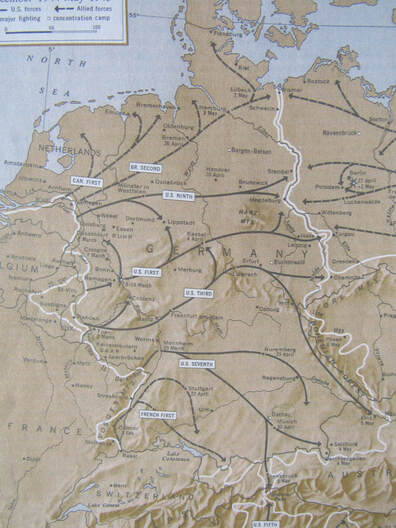 On March 15, 1944, the SS Gripsholm steamed into the harbor of New York under the guiding light of the Statue of Liberty. It was a Swedish passenger ship leased by to the United States for exchanging American citizens kept in German prison camps for German POWs captured by the Allied forces in Europe. Standing along the railing were the Wallenbergs. A wealthy Jewish family living in Poland before WWII, Lena Wallenberg was an American citizen who had met and married Shya Wallenberg, a Polish citizen, painter, and antique dealer, several years before when he had traveled to New York City to buy art. She returned with him to the city of Lodz, fifty miles southwest of Warsaw, where he managed an art gallery. She became a fashion designer, and they soon had a daughter named Mary, who was nineteen when she stared up at the Statue of Liberty. A large crowd waited on the dock in New York City to welcome the refugees. Among them was a Yiddish journalist, S. L. Shneiderman, who was interviewing people as they got off the ship. He began a conversation with Mary, asking her to describe her life under Hitler. Mary reached into her suitcase and pulled out twelve small spiral-bound notebooks—her diary, written in a self-devised code and kept hidden through the four years of their captivity. The journalist would later help her translate her diary into, first, a serialized series of articles for a Jewish journal in 1944, and then, on February, 1945, a book entitled Warsaw Ghetto: A Diary, by Mary Berg. The book would shock America; never had the atrocities committed under the Third Reich been even imagined. Mary and her family had been enjoying a six-week vacation at a resort in Poland when the German Army invaded on September 1, 1939, when Mary was fifteen. Racing back to their home in Lodz, already being shelled by German artillery, they gathered what they could and rode three bicycles into the throngs of people escaping to Warsaw. Over the next four years, the Nazi Gestapo and their relentless persecution of Jews decimated their lives, not in concentration camps, but by confining them inside the Warsaw ghetto, established in November, 1940. In July, 1942, negotiations between Germany and the Allied nations proposed exchanging non-European families for German POWs. In preparation, Mary, her family and seven hundred other ghetto residents who held foreign passports were moved into the Pawiak Prison, a compound near the center of the ghetto. Twenty-one were U.S. citizens, while most of the others had South American passports: Paraguay, Costa Rica, Nicaragua, Ecuador, Bolivia, and Mexico. In January, 1943, they were moved to an internment camp at Vittel, in the mountains of France. Vittel was a former resort that housed the new prisoners in former hotels and hostels, while providing them access to the parks, shops, and entertainment venues of the resort. The purpose of placing them in Vittel was to show to the world that the Third Reich treated their “captured citizens” with great care and concern. Mary’s diary revealed the truth. As her diary was prepared for publication, Mary used the last name Berg as protection for her family, friends, and relatives in Poland. She was not the only witness to the Nazi atrocities before the war in Europe ended, but her diary was the first account in English to describe the ghetto from its initial establishment in 1940 through the deportations that took place in the late summer of 1942. It was also one of the first personal accounts to describe gas being used to kill prisoners at the death camps. She also told:
On March 5, 1944, as the SS Gripsholm pulled away from the French coast and began its trip across the Atlantic, Mary Berg wrote: “I went out on deck and breathed the endless blueness. The blood-drenched earth of Europe was far behind me. The feeling of freedom almost took my breath away. In the last four years I have not known this feeling. [I have only known] four years of the black swastika, of barbed wire, ghetto walls, executions, and, above all, terror—terror by day and terror by night.” The 75th edition of Mary’s diary is titled The Diary of Mary Berg, Growing up in the Warsaw Ghetto. It is a OneWorld Publication, 2018.
0 Comments
Leave a Reply. |
AuthorDon Willerton has been a reader all his life and yearns to write words like the authors he has read. He's working hard at it and invites others to share their experiences. |

 RSS Feed
RSS Feed